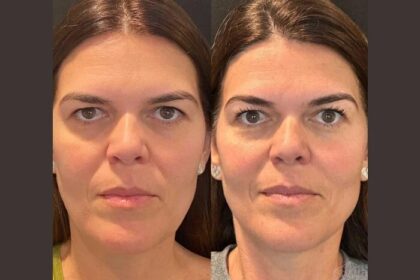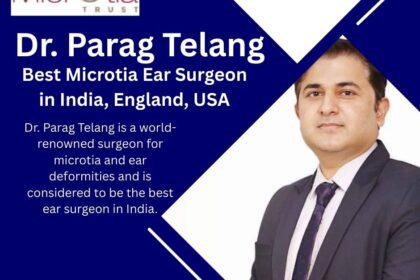Microtia surgery, an ear reconstruction procedure to address microtia — a congenital external ear deformity — has, over the years, been surrounded by myths and misconceptions. Unfortunately, these false beliefs discourage many patients and parents from opting for surgical correction. As a result, some individuals continue to live with functional limitations, such as hearing loss, and emotional challenges due to appearance-related concerns.
In this article, Dr. Parag Telang, a renowned and Best Ear Surgeon in Mumbai, shares essential facts about Microtia Surgery in Mumbai that every patient and parent should know before making a decision.
1. Microtia surgery is not purely cosmetic
While it is true that the primary goal of microtia surgery is to reconstruct an ear that closely resembles a natural one and blends harmoniously with facial features, its benefits go beyond aesthetics.
A successfully reconstructed ear can positively impact a child’s self-esteem and social development. In some cases, microtia surgery also includes ear canal reconstruction or the placement of hearing aids to improve hearing efficiency. Once a child has a functional, natural-looking ear, they can comfortably wear glasses, participate in sports, and enjoy day-to-day activities without feeling restricted.
2. It involves multiple stages
Microtia correction is not a single long operation but a series of staged procedures. Depending on the chosen technique and the patient’s needs, there can be two to four stages.
When using rib cartilage, these stages often include:
-
Ear framework construction
-
Lobule transposition
-
Elevation and sulcus creation
-
Tragus and concha reconstruction
The number of stages may vary, and the sequence may be adjusted to suit the patient’s anatomy and desired outcome.
3. Different techniques can be used
There are several approaches to performing microtia surgery.
-
Brent Technique (Rib Cartilage Reconstruction): Usually involves 4–5 stages, including framework construction, lobule transposition, ear elevation, and tragus reconstruction.
-
Two-Stage Advanced Technique: Combines some of the above steps into fewer surgical sessions.
-
Tissue Expander Technique: The first stage involves placing a tissue expander under the skin to create space for the reconstructed ear, followed by framework placement.
Each technique has its benefits, and the choice depends on the patient’s age, anatomy, and surgeon’s expertise.
4. The aim is a natural-looking ear
Whether using rib cartilage or advanced ear prosthetics, the end goal of microtia surgery is to create an ear that looks and feels natural. Rib cartilage, in particular, offers a durable and lifelike result, integrating seamlessly with surrounding tissues.
5. Ideal age for rib cartilage reconstruction is 7–10 years
Children in this age group generally have enough rib cartilage to create an adult-sized ear. However, microtia surgery is not limited to children. Adults who have lost an ear due to trauma or who were born with microtia can also undergo rib cartilage ear reconstruction.
6. Recovery is manageable
Recovery time varies, but most patients can resume light activities within a few weeks. Initial healing involves mild swelling, bruising, and discomfort, which gradually subside. Final ear positioning and contour typically stabilise within 6–12 months.
7. Results last a lifetime
One of the biggest advantages of rib cartilage reconstruction is its permanence. Since rib cartilage is living tissue, it grows and ages naturally along with the patient. It’s highly resistant to trauma, less prone to infection, and unlikely to shift or get exposed over time.
While results are long-lasting, factors such as overall health, the chosen surgical technique, and — most importantly — the surgeon’s expertise play a major role in the final outcome.
8. Expertise matters most
Microtia surgery is one of the most complex reconstructive procedures in plastic surgery. It requires technical precision, advanced training, and a keen artistic eye. Choosing a certified, experienced, and highly skilled surgeon is essential to achieving the best functional and cosmetic results.
Why Dr. Parag Telang is the preferred choice for Microtia Surgery in Mumbai
Dr. Parag Telang has earned a reputation as the Best Ear Surgeon in Mumbai, with over 1,000 successful microtia surgeries to his name. As a leading paediatric microtia specialist, he combines surgical expertise with a compassionate approach, ensuring every patient receives personalised care.
At The Microtia Trust, Dr. Telang offers world-class facilities, advanced surgical techniques, and a high success rate for patients from across India and abroad. His meticulous attention to detail ensures that the reconstructed ear not only looks natural but also functions optimally when combined with hearing restoration methods.
Conclusion
Microtia surgery is more than just an ear reconstruction procedure — it’s a life-changing intervention that restores function, improves appearance, and boosts confidence. Myths and misconceptions should never prevent a patient from exploring this transformative option.
By understanding the facts, recognising the stages involved, and selecting the right surgical technique, patients can make well-informed choices. Above all, the expertise of the surgeon plays the most critical role in ensuring excellent results.
If you or your child is affected by microtia, consult with Dr. Parag Telang, widely regarded as the Best Ear Surgeon in Mumbai, to discuss your personalised treatment plan. With his expertise in Microtia Surgery in Mumbai, you can be assured of safe, precise, and aesthetically pleasing results that last a lifetime.



